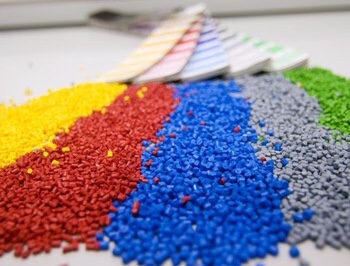Polymers and Pigments
Colours in different materials aren’t an exact match, but they are an extremely close match.There are hundreds of different pigments than can be used to produce a formulation to achieve a seemingly endless range of colours, however many things must be considered when producing these formulations. Not all Colourists use every single pigment available so it is a safe assumption that while one colourist achieves a colour with a formulation, another Colourist may achieve the same colour with an entirely different blend of pigments. Some pigments are used widely across the industry such as white Titanium Dioxide or Carbon Black, which is available in a variety of grades.
When creating a formulation there are many different things that need to be considered.
For 3D printing the main things that need to be considered are the following:
In recent years the number of materials being made available for 3D printing has grown. Fortunately, many of these materials are not considered new in the polymer processing industry so Colourists already have years of experience with them. The main issue here is that different materials have different appearances, such as the slight straw hue that PLA has, the opaque dull white of most ABS blends or the superior clarity that PETG has. These all need to be considered when making a formulation.
While most pigments are inert under most conditions, there are instances where specific pigments aren’t suitable for use in certain polymers. This can mean a variety of different things can happen, such as the colour migrating leaving a washy colour, or the pigment may change colour entirely. For example, certain pigments suitable for use in PLA are not suitable for use in ABS.
The final thing to consider, is the properties of the pigment being used. While this in part relates to the end use, it’s impossible to list all the possible uses of 3D printed parts it can be very difficult to determine exactly what the properties must be. There are a few rules that are followed. Some pigments can discolour upon exposure to UV which would be undesirable in a PETG part that is meant for use outside for long periods of time. Mohs hardness of the pigments needs to be considered, if this value is higher than that of brass, you’d need a steel nozzle as is the case with glow in the dark pigments. Particle size is also considered, if these particle sizes are larger than the orifice of a nozzle it would quickly block as is the case with the glitter effect commonly seen in some filaments.
When all these things are considered it can be difficult to see how Colourists can produce colour matches between materials and applications, in truth they don’t. There is no exact colour match between different formulations, there is only extremely close matches. Then there are factors outside of the colourists control such as how different people will interpret a colour or the lights the colour is seen beneath (search for metamerism for a more detailed explanation).
Our Colourists have over 40 years of experience in preparing formulations but even they will admit that an exact match is impossible, so you may perceive a slight difference between our red in different materials in the future depending on a range of factors, but this is closest possible match achievable when considering all of the above.

